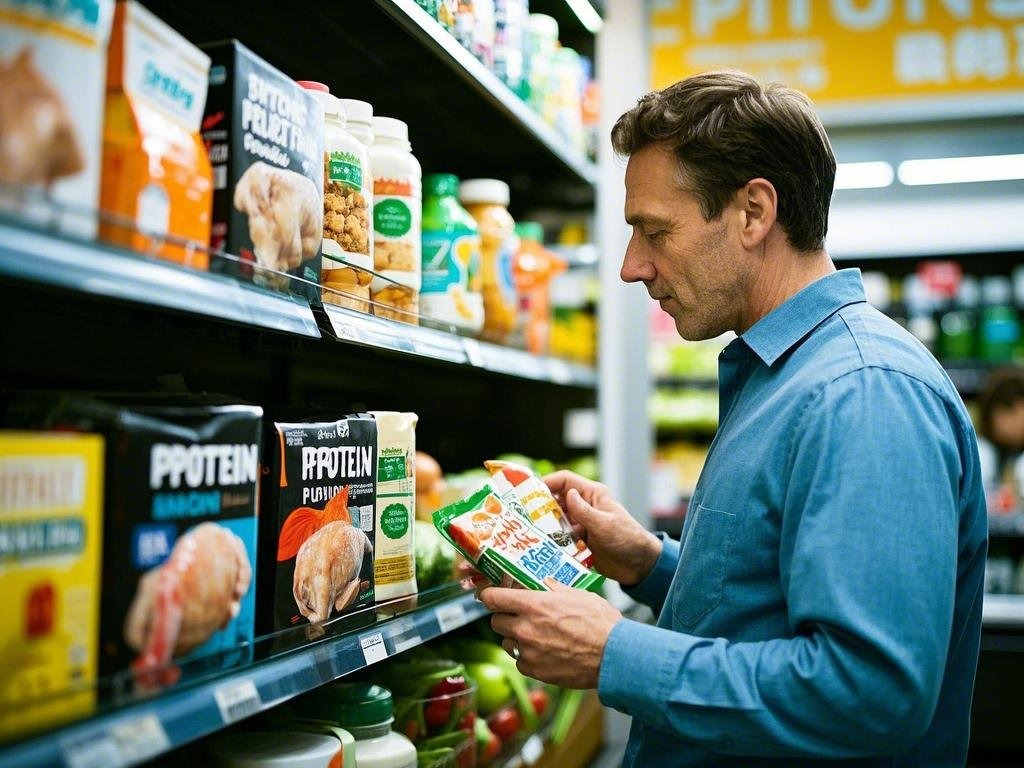Supermarkets are undergoing a transformation, with snack aisles now brimming with roasted chickpeas, cheese bites, and beef jerky. Alongside low-fat and low-sugar options, high-protein alternatives are taking center stage. Dairy sections are stocked with exotic-sounding items like skyr and kefir, while social media influencers and celebrities champion protein-rich diets as the new standard for strength and health. What began as a trend is now bordering on obsession, with consumers increasingly prioritizing protein over traditional dietary staples like fiber and whole grains.

The Rise of Protein Mania
Google searches for “high-protein diet” hit an all-time high in January 2024, reflecting a growing consumer appetite for protein-packed foods. According to the Hartman Group, 64% of Americans are actively seeking to increase their protein intake. In the UK, online supermarket Ocado reports that over 40% of consumers have boosted their protein consumption in the past year. This shift is driven by a combination of fitness goals, health concerns, and the influence of social media, where influencers and celebrities promote the benefits of protein for muscle building and satiety.
From Gym Enthusiasts to the Masses
While gym-goers have long embraced protein shakes and bars, the trend has now expanded to a broader audience. Market research firm Kantar estimates that spending on protein-rich sports nutrition products in British supermarkets reached £143 million ($182 million) in the 12 months to February 2024, nearly double the figure from three years prior. Juergen Esser of Danone notes that the protein craze initially took off among younger consumers aiming for a muscular physique but has since spread to older adults focused on maintaining strength and overall health.
The Pandemic and the Protein Push
The COVID-19 pandemic heightened awareness of health and wellness, accelerating the demand for protein-rich foods. Now, the rise of GLP-1 weight-loss drugs like Ozempic is further fueling this trend. These drugs suppress appetite, leading users to lose both fat and muscle. To counteract muscle loss, many are turning to high-protein diets. A Cornell University study found that households with at least one GLP-1 user reduce their grocery spending by 5.5% as they shift away from processed foods.
Supermarkets Adapt to the Protein Boom
Supermarkets are rapidly expanding their high-protein offerings, moving beyond traditional protein shakes and bars. Nestlé has introduced protein-enriched frozen pizzas and pastas, while Conagra Brands has launched a line of “GLP-1 friendly” ready meals. Even Mars has joined the trend, releasing high-protein versions of its iconic chocolate bars. These innovations cater to consumers seeking convenient, protein-packed options that align with their dietary goals.
The Business of Protein
The protein boom is proving lucrative for food companies. Danone’s revenues grew by 4.3% in 2024, driven by strong sales of high-protein yogurts and drinks. The company’s high-protein unit has seen sales surge from €400 million ($430 million) in 2021 to €1 billion ($1.1 billion) in 2024, far outpacing overall business growth. However, the question remains: has the protein trend gone too far? While protein is essential for muscle maintenance, blood sugar control, and other bodily functions, the science on optimal intake is still unclear. The World Health Organization recommends 0.83 grams of protein per kilogram of body weight daily, a threshold many Americans and Britons already exceed.
Balancing Act for Food Companies
Food manufacturers face the challenge of meeting diverse consumer demands. Beyond protein, consumers are seeking less processed, plant-based, and gut-friendly options. Danone is developing “hybrid” dairy products that combine traditional milk protein with plant-based alternatives, offering a blend of digestibility and sustainability. Companies like Biotiful Gut Health are focusing on high-protein products with natural ingredients, while snackmaker The Curators has found a sweet spot with its soya and lentil chips, offering 10 grams of protein per bag without compromising on taste.
The Future of Protein
As food trends evolve, the protein craze shows no signs of slowing down. However, the key to its longevity may lie in balancing nutritional benefits with flavor. While consumers are drawn to the health advantages of high-protein diets, they ultimately want products that taste good. For food companies, striking this balance will be essential to staying relevant in an increasingly competitive market.
The protein revolution is reshaping the way we eat, shop, and think about nutrition. From gyms to grocery stores, the demand for protein is driving innovation and challenging food companies to adapt. Whether this trend will endure or fade remains to be seen, but for now, protein is king.






















